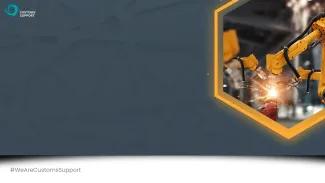The logistics of manufacturing
Every component of a unit undertakes a journey before it gets to your manufacturing plant. Raw materials are processed into parts, and parts are collected and combined to make components, and these components are eventually gathered for manufacturing at your premises.
Each stage of the journey requires multiple goods to be moved and collected in one place, even when processing the raw materials as chemicals are used to refine metals and combine them into alloys, or to create polymer resins.
Your procurement managers need to ensure that all of these parts arrive at the plant on time, as do their counterparts in your supplier’s businesses.
But where does customs come into this, and what effect can this have on your supply chain?
Customs and manufacturing
For every border movement within your supply chain, there is an export clearance and an import clearance. Additionally, there is an import duty calculation, and this is where you can save or lose substantial amounts of money with some small changes.
Here are some of the things that will impact the tax you pay:
Tariff classification
The HS code that you use dictates the tax rates and rules for preferential origin throughout your supply chain, so getting a correct goods classification is essential.
Although some HS codes are clear, such as the one for iron pyrites, it becomes trickier to ascertain the correct heading once components are made from multiple pieces. This is where you run the risk of incurring more charges or restrictions than necessary.
Preferential origin
Assuming your HS code is correct, you can explore preferential duty rates associated with that commodity. You may find that materials are cheaper at first glance from your current supplier, but the total cost with the duty is actually higher when compared to a duty-free option elsewhere.
Additionally, the combination of goods that make up a component may not reach the right mixture to apply preferential origin down the line, but a change in sourcing one part could allow for a reduction in duty in the next stage.
Customs procedure
Paying import duty and VAT may not be necessary for every movement, particularly when the processed parts are being re-exported during the onward sale. Check to see if there is an option to suspend or eliminate paying taxes until you know where the goods are going.
What’s the benefit of developing your manufacturing and customs strategy?
By checking if you can eliminate the payment of duty, you can potentially create value through both the procurement stage and by enabling you to be more competitive in the global market.
Even without an immediate saving on duty, leveraging the right customs processes can help protect your cash flow or give you the option to save if the sale goes to a different destination than originally intended.
However, getting this wrong may lead to a liability to pay back the savings at a later date if customs authorities find you non-compliant during an audit. This is why it’s essential to use qualified experts who can empower your global trade by making these complex issues simple.
Customs Support are at The National Manufacturing & Supply Chain Conference & Exhibition in Dublin, 23rd – 24th May
Come and find us in Dublin where we will be happy to talk you through our Europe-wide customs consultancy, customs clearance, and duty management services.
Whether or not you are attending, you can contact one of our experts for help with manufacturing and customs today.














